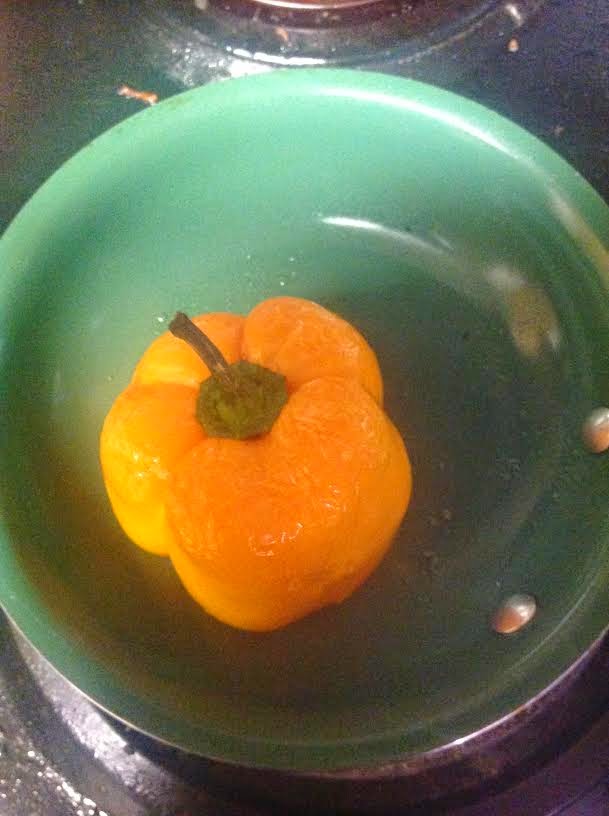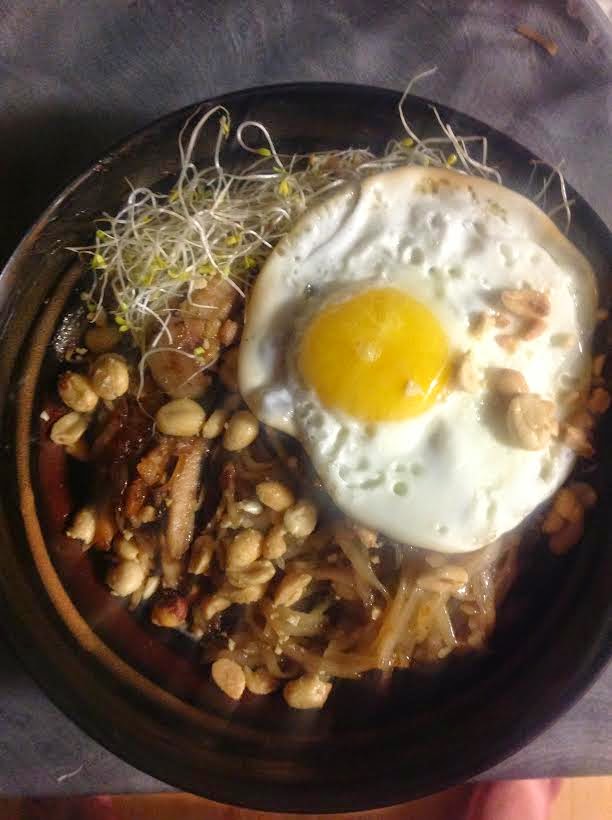Since I have moved to Orlando, I have not only developed a new found respect for the Food of Southeast Asia but have seen an ever growing respect from other people.
Southeast Asia as an entire region consists of Myanmar (Burma), the Philippines, Malaysia, Brunei, Indonesia, Thailand, Vietnam, Cambodia and Laos, the most commonly referred countries in the United States being Thailand, Vietnam and the Philippines, cuisine wise. What makes these cuisines so unique is how difference each nations' history consists of. The more east you go in this region, the more indian influence you see, many dry spices being a key flavor component. The more North you go, the more similar the food is to that of China. Given the large Spanish influence in the Philippines, you will see their cuisine is heavily similar to that of Spain and Latin America. And then, if you go to Malaysia, Indonesia and Brunei, you will find their food quite similar to that of the Middle East in some senses, given the influence from the Islamic faith. Because of the Vietnamese war, there is a shocking resemblance to French cuisine in their common street foods. Because there is little outside influence in Thai culture, their cuisine could be seen as the base for comparison.
The popularity of Southeast Asian food (specifically Thai and Vietnamese) is very different than that of Chinese and Japanese food, where as American chinese food is just Chinese-esque, Thai and Vietnamese foods are just now growing in popularity in the United States along with a growing appreciation toward traditional international cuisine and larger immigration rates with those nations. Because of this, the food being consumed from these nations are prepared from those who grew up eating these cuisines and people are coming to respect the bold flavors and ingredients from them. Because of this, the food from Southeast Asia are less (for lack of a better term) diluted by American taste. Of course, there are going to be the most popular dishes such as Pho, Pad Thai, Green Curry and Bahn Mi, because they are easier to relate to the cuisine that Americans are used to, but they would act as more of a gateway to the unique flavors used in these cuisines. As poeople begin to enjoy the salty, sweet, caramelized, aromatic flavors of these standard dished, they will grow to try more foods of these cuisines. This is quite similar to the way I became to enjoy Indian food, starting with the foods more similar to the food I am used to, such as tandoori chicken, developing a taste for their spices and working my way to the more "scary" traditional foods.
Along with a more adventurous amount of tastes in the United States, and the large influx of immigration from that region, there is more importation of ingredients from Southeast Asia. Like, when making my Pad Thai recipe, I saw no issues finding the exact traditional ingredients. So the food you are tasting is made more correctly with authentic ingredients and it is easier to make it authentic at home.
Because of people being more adventurous, many first generation people from Southeast Asia and increased trade of foods between the United States and these countries, you wont hear as many statements like "you can only have actual Thai food in Thailand," or "Americans just can't make correct Vietnamese food," as you would hear all the times with cuisines of countries like Mexico, Italy or China. Of course, there are some very traditional dished from the depths of these countries that only very adventurous westerners will try like Dam Nee of northern Thailand which replaces the ussual fish sauce for seasoning with beef bile, but I doubt you can say that you havn't had "real" thai food if you haven't tasted that. This is the same sense that you wouldn't try Casu Marzu ( an Italian cheese with live maggots used in fermentation, still live when served,) or Tacos con Culagulo de Moronga ( West Mexican tacos featuring coagulated pigs blood,) but can still say you know what real Italian and Mexican food tastes like.
I find this appreciation of of Southeast Asian cuisine very beautiful, it displays a new respect toward international cuisine in the United States and I find for a lot of people, that sparks more interest in the countries and cultures themselves. Lastly, I think that if this appreciation for unaltered Thai and Vietnamese food can happen, similar trends can be seen with other rarely seen cuisines in the United States like Northern European, Middle Eastern and Southern African to name a few.
Southeast Asia as an entire region consists of Myanmar (Burma), the Philippines, Malaysia, Brunei, Indonesia, Thailand, Vietnam, Cambodia and Laos, the most commonly referred countries in the United States being Thailand, Vietnam and the Philippines, cuisine wise. What makes these cuisines so unique is how difference each nations' history consists of. The more east you go in this region, the more indian influence you see, many dry spices being a key flavor component. The more North you go, the more similar the food is to that of China. Given the large Spanish influence in the Philippines, you will see their cuisine is heavily similar to that of Spain and Latin America. And then, if you go to Malaysia, Indonesia and Brunei, you will find their food quite similar to that of the Middle East in some senses, given the influence from the Islamic faith. Because of the Vietnamese war, there is a shocking resemblance to French cuisine in their common street foods. Because there is little outside influence in Thai culture, their cuisine could be seen as the base for comparison.
The popularity of Southeast Asian food (specifically Thai and Vietnamese) is very different than that of Chinese and Japanese food, where as American chinese food is just Chinese-esque, Thai and Vietnamese foods are just now growing in popularity in the United States along with a growing appreciation toward traditional international cuisine and larger immigration rates with those nations. Because of this, the food being consumed from these nations are prepared from those who grew up eating these cuisines and people are coming to respect the bold flavors and ingredients from them. Because of this, the food from Southeast Asia are less (for lack of a better term) diluted by American taste. Of course, there are going to be the most popular dishes such as Pho, Pad Thai, Green Curry and Bahn Mi, because they are easier to relate to the cuisine that Americans are used to, but they would act as more of a gateway to the unique flavors used in these cuisines. As poeople begin to enjoy the salty, sweet, caramelized, aromatic flavors of these standard dished, they will grow to try more foods of these cuisines. This is quite similar to the way I became to enjoy Indian food, starting with the foods more similar to the food I am used to, such as tandoori chicken, developing a taste for their spices and working my way to the more "scary" traditional foods.
Along with a more adventurous amount of tastes in the United States, and the large influx of immigration from that region, there is more importation of ingredients from Southeast Asia. Like, when making my Pad Thai recipe, I saw no issues finding the exact traditional ingredients. So the food you are tasting is made more correctly with authentic ingredients and it is easier to make it authentic at home.
Because of people being more adventurous, many first generation people from Southeast Asia and increased trade of foods between the United States and these countries, you wont hear as many statements like "you can only have actual Thai food in Thailand," or "Americans just can't make correct Vietnamese food," as you would hear all the times with cuisines of countries like Mexico, Italy or China. Of course, there are some very traditional dished from the depths of these countries that only very adventurous westerners will try like Dam Nee of northern Thailand which replaces the ussual fish sauce for seasoning with beef bile, but I doubt you can say that you havn't had "real" thai food if you haven't tasted that. This is the same sense that you wouldn't try Casu Marzu ( an Italian cheese with live maggots used in fermentation, still live when served,) or Tacos con Culagulo de Moronga ( West Mexican tacos featuring coagulated pigs blood,) but can still say you know what real Italian and Mexican food tastes like.
I find this appreciation of of Southeast Asian cuisine very beautiful, it displays a new respect toward international cuisine in the United States and I find for a lot of people, that sparks more interest in the countries and cultures themselves. Lastly, I think that if this appreciation for unaltered Thai and Vietnamese food can happen, similar trends can be seen with other rarely seen cuisines in the United States like Northern European, Middle Eastern and Southern African to name a few.























































